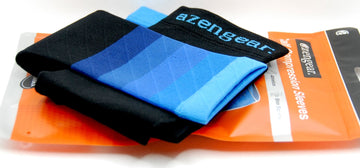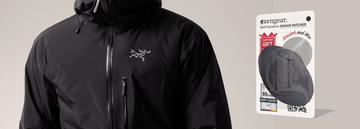The Best Calf Compression Sleeves for Running: A Comprehensive Guide
by Emily Jannet on Mar 31, 2022
Are you an avid runner? In this post, we'll discuss how to choose the best calf compression sleeves for running. There are some great options out there! Whether you're a beginner or an experienced runner, these sleeves can help improve your performance and protect your calves from injury. Keep reading to learn more!
Compression gear is great for recovery. One study from 2015 in the Journal of Strength and Conditioning Research found that runners who wore compression socks and sleeves for 48 hours after they finished a marathon improved their performance on two different treadmill tests by 2%. This means the athletes had faster muscle repairing processes and were able to recover much quicker than those without wearing these types of garments!
Fabric Contents, Fit and Compression Level
When it comes to calf compression sleeves, there are a few things you should look for. First, make sure the sleeves are made of a breathable fabric that will keep your skin cool and dry. Generally the sleeves should be made out of nylon and polyester; however, the best sleeves usually contain a small percentage of elastane or lycra which increases the stretchiness and provides a comfortable tight fit.
Second, make sure the sleeves fit snugly but are not too tight – you don't want them to be uncomfortable or restrict your movement.
If you're looking for sleeves that offer extra support and compression, consider the ones with graduated compression. This type of compression is designed to improve circulation and reduce the risk of injuries.
Finally, choose calf sleeves that are easy to put on and take off. You'll want to be able to put them on quickly and have no difficulties taking them off, especially after an intense exercise or long distance run.
Product Spotlight:
Calf Support Compression Sleeves for Shin Splints (20-30 mmHg / Class 2)
- TRUE GRADUATED COMPRESSION SLEEVES - provide calf compression support, increase oxygen flow & improve blood circulation
- OPTIMISED TWILL DESIGN FOR SHIN SPLINT SUPPORT - absorb impacts, protect from cramps & injuries, reduce leg swelling & fatigue; fabric contents: 65% nylon, 20% elastane, 15% lycra
- DOUBLE-STITCHED SEAMS ON TOP & BOTTOM - lightweight, anti-odour, moisture-wicking & breathable fabric can endure multiple washing cycles
- LEG SLEEVES FOR SPORTS - these footless compression socks alleviate shin pain, speed up muscle recovery & keep your legs warm, dry & healthy
Three Main Types of Calf Compression Sleeves
There are three main types of calf compression sleeves: graduated compression, static compression, and dynamic compression.
- Graduated compression sleeves are designed to provide more pressure at the ankle and less pressure at the top of the sleeve. This type of sleeve is ideal for athletes who suffer from swollen ankles or calves.
- Static compression sleeves offer uniform pressure throughout the entire sleeve. This type of sleeve is ideal for athletes who want extra support and stability during exercise.
- Dynamic compression sleeves are designed to provide compression that changes with the movement of the calf. This type of sleeve is ideal for athletes who want to improve blood circulation and reduce muscle fatigue.
Different Levels of Graduated Compression
There are different levels of graduated compression, so you can choose the level that's best for you.
- Light compression (15-20mmHg or Class 1) is ideal for athletes who want to prevent muscle soreness and fatigue.
- Medium compression (20-30mmHg or Class 2) is perfect for athletes who want to improve their performance and recover faster.
- Heavy compression (30-40mmHg or Class 3) is ideal for athletes who need extra support and protection from injury. This type of compression sleeves needs to be prescribed by a doctor and not available for sale over the counter due to a high tightness level which can affect varicose veins and blood circulation.
- Extreme compression (40-50mmHg) is used to treat serious medical problems such as blood clots for example. Once again, the compression sleeves of this level must be prescribed by a doctor.
You can learn more about various compression levels in one of our previous posts here.
Now that you know about the different types of calf compression sleeves available, let's take a look at some of the best options on the market.
Pretty much any sports brand our there usually carries calf sleeves inventory in their product catalogue; however, the key is to find the best fit for the best price. We recommend not to pay for the brand but focus on the quality of fabric, stitching and ergonomic fit that comes with true graduated compression.
Azengear calf compression sleeves are a good option. They have 20-30mmHg (Class 2) graduated compression and made of nylon, polyester and elastane. They also do not have a visible logo and come in a variety of colours which can fit your running wardrobe.
Ready to get a pair today? Visit our online store or search "azengear calf sleeves" on Amazon in your local marketplace.






